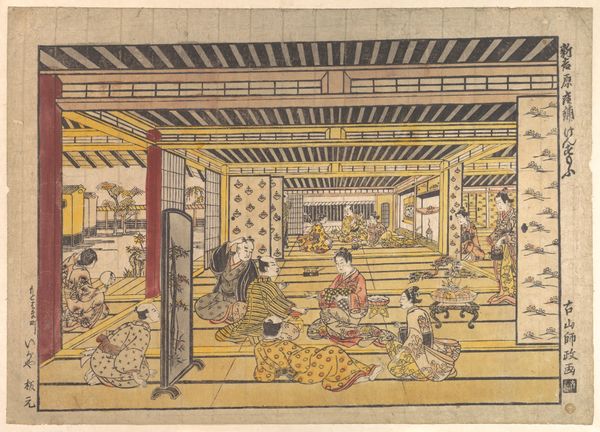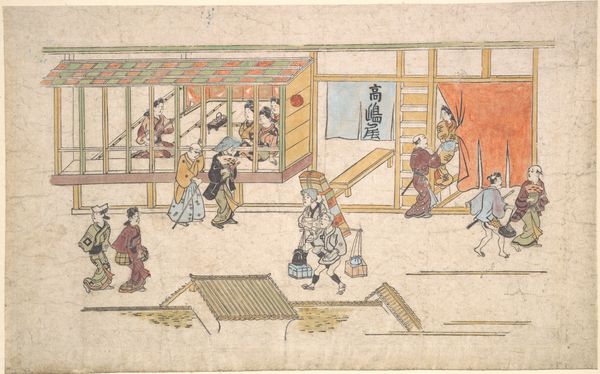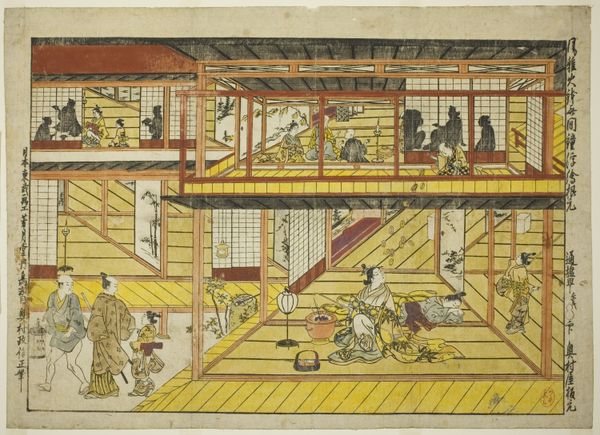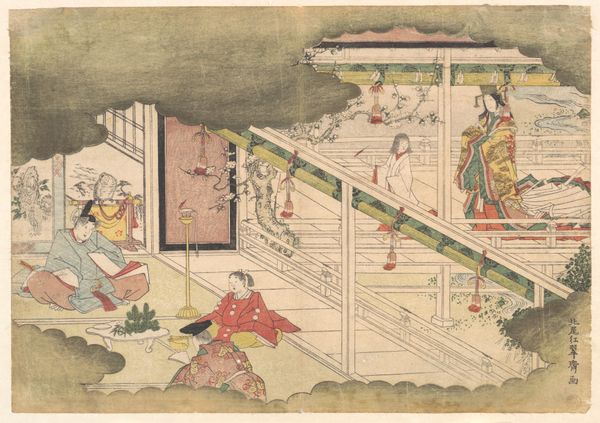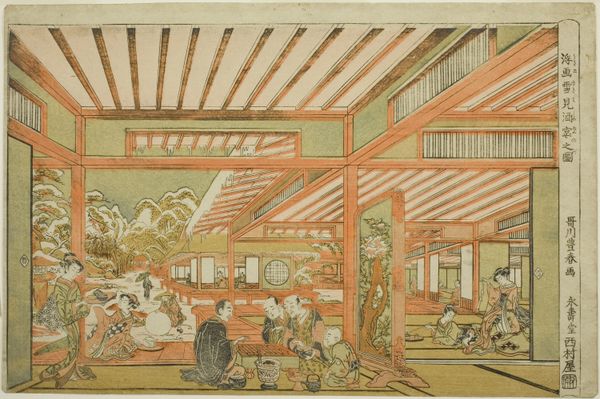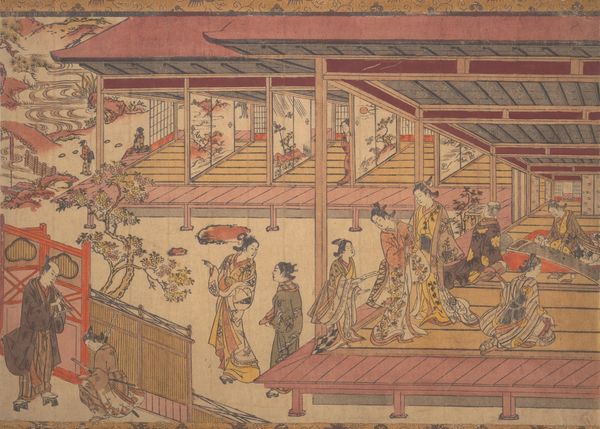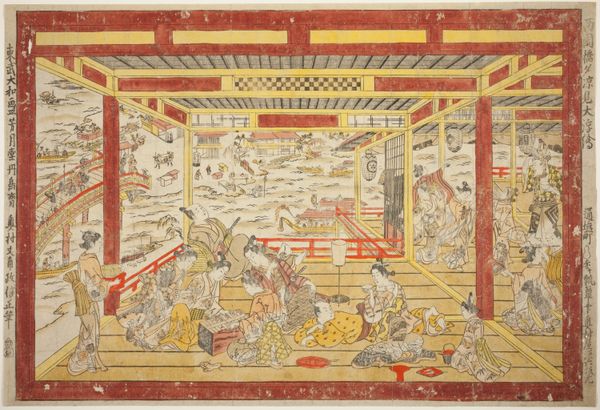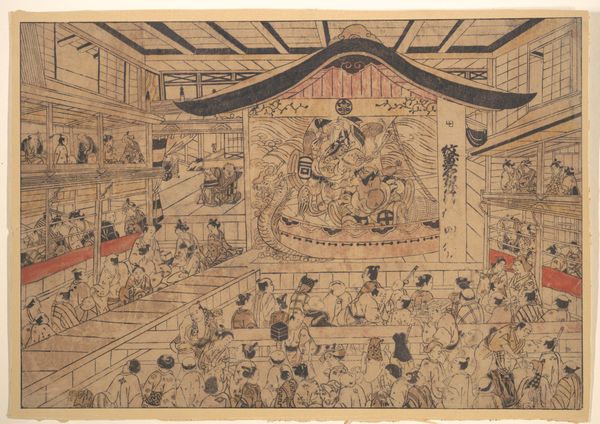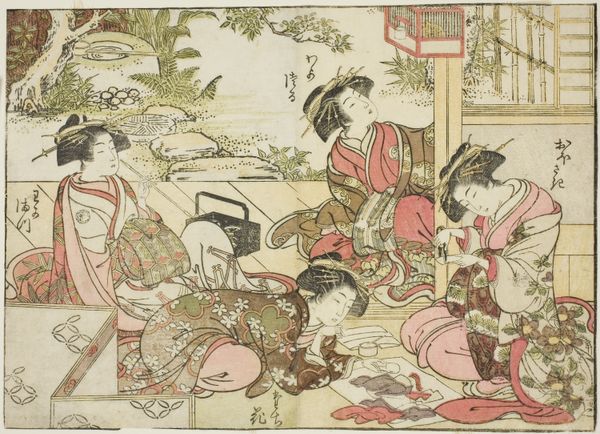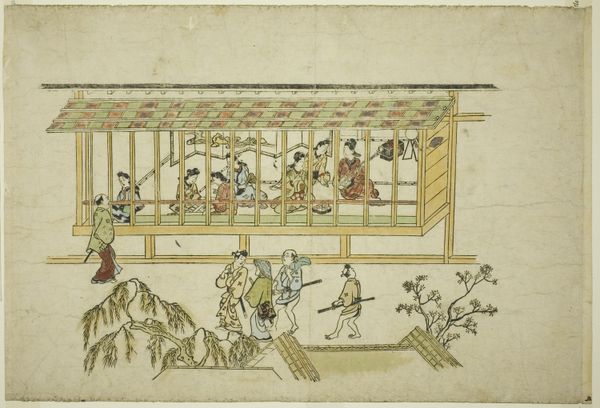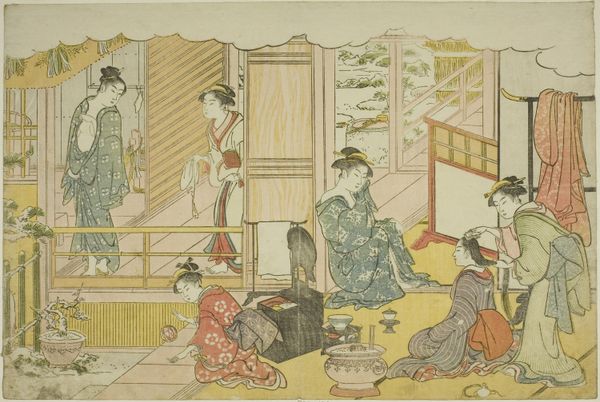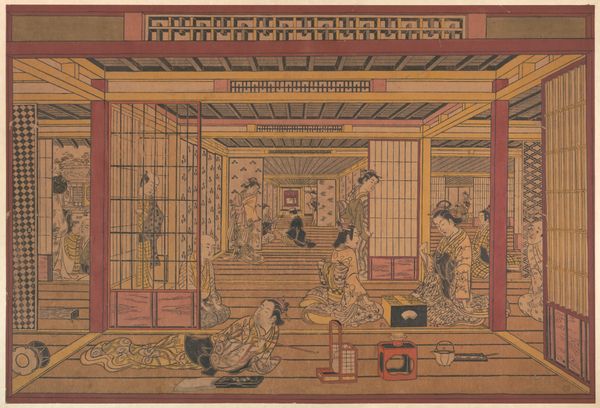
Original Perspective Picture of the Fashionable Seven Gods of Good Fortune (Furyu shichi fukujin uki-e kongen) c. 1740s
0:00
0:00
print, woodblock-print
#
portrait
# print
#
asian-art
#
ukiyo-e
#
perspective
#
woodblock-print
#
genre-painting
#
watercolor
Dimensions: 29.7 × 44.5 cm (11 3/4 × 17 1/2 in.)
Copyright: Public Domain
Curator: Looking at this colorful woodblock print from the Art Institute of Chicago, one immediately feels drawn into an intimate setting. Editor: Yes, it's captivating! My first impression is its unusual depth for the period and genre. It pulls you right into that room, it's almost dizzying! Curator: Precisely! This print, titled "Original Perspective Picture of the Fashionable Seven Gods of Good Fortune," or "Furyu shichi fukujin uki-e kongen," was created by Okumura Masanobu around the 1740s. It exemplifies the Ukiyo-e style, but stands out with its adoption of Western perspective. Editor: Ukiyo-e often romanticizes or aesthetically re-frames certain elements. This print places gender presentation at its core, using visual hierarchy to signal importance. It begs the question—who has access to luxury? Are these really deities? And does gender play a role? Curator: Those are important questions. The artist would have been acutely aware of social stratification at this point, too. The commodification of fortune gods within Ukiyo-e became popular for the merchant classes who wanted to attain status or recognition, after all. The skillful illusion of depth and dimension here is especially key to consider. Editor: The fact that the composition almost appears stage-like emphasizes its artificiality, as if good fortune can be bought or performed. How might this have shaped societal values at the time? Was it a method for creating aspirational, class-driven performance? Curator: I believe so. It created something for citizens to strive for in a new era. The Seven Lucky Gods were being adopted and appropriated into a relatively novel class of consumers. Also, remember that perspective techniques themselves were new. It's likely that its initial reception also rested in sheer fascination. Editor: Agreed! These elements combine to offer a telling glimpse into a moment of profound societal flux. It really is an intriguing dialogue about desire and identity played out in ink. Curator: Absolutely. Masanobu’s unique use of the "floating world" genre indeed captured a key transformative point in Japan’s visual culture and mercantile development.
Comments
No comments
Be the first to comment and join the conversation on the ultimate creative platform.
